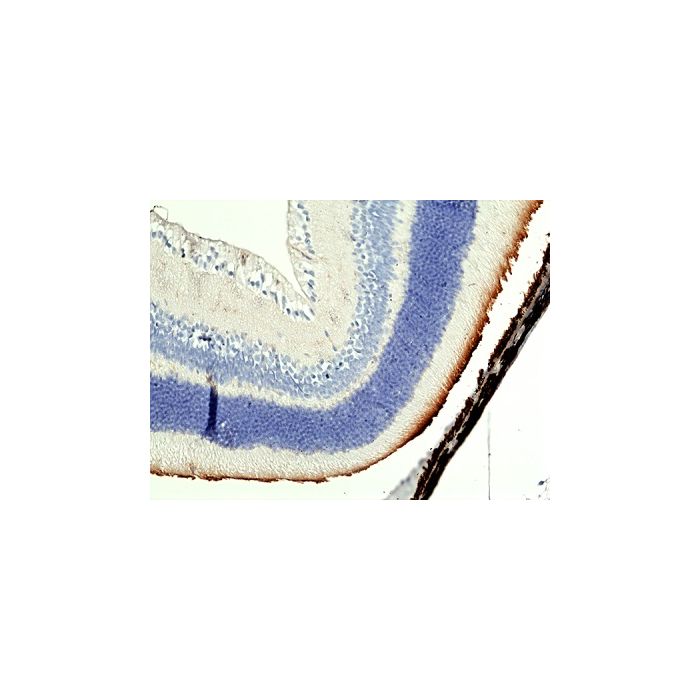Cookie Policy: This site uses cookies to improve your experience. You can find out more about our use of cookies in our Privacy Policy. By continuing to browse this site you agree to our use of cookies.
RevMab
anti-MerTK (mouse), Rabbit Monoclonal (RM469)
As low as
468
CHF
CHF 468.00
In stock
Only %1 left
REV-31-1361-00-R100100 µlCHF 468.00

Figure 1: Immunohistochemical staining of formalin fixed and paraffin embedded mouse eye tissue sections using Anti-mouse MerTK antibody (RM469) at 1:100 dilution.
| Product Details | |
|---|---|
| Synonyms | Mer Tyrosine Kinase |
| Product Type | Recombinant Antibody |
| Properties | |
| Clone | RM469 |
| Isotype | Rabbit IgG |
| Source/Host | Rabbit |
| Immunogen/Antigen | Recombinant protein of MerTK extracellular domain. |
| Application |
IHC: 1:100 - 1:200 WB: 1:100 - 1:500 |
| Crossreactivity | Mouse |
| Specificity |
RM469 reacts to mouse MerTK (Tyrosine-protein kinase Mer). |
| Purity | Protein A purified. |
| Purity Detail | Protein A affinity purified from an animal origin-free culture supernatant. |
| Formulation | Liquid. 50% Glycerol/PBS with 1% BSA and 0.09% sodium azide. |
| Isotype Negative Control | |
| Other Product Data |
Click here for Original Manufacturer Product Datasheet |
| Accession Number | Q60805 · MERTK_MOUSE |
| Declaration | Manufactured by RevMab Biosciences. |
| Shipping and Handling | |
| Shipping | BLUE ICE |
| Long Term Storage | -20°C |
| Handling Advice | Avoid freeze/thaw cycles. |
| Use/Stability | Stable for at least 1 year after receipt when stored at -20°C. |
| Documents | |
| Product Specification Sheet | |
| Datasheet |
 Download PDF Download PDF |
Description
MerTK is a transmembrane receptor tyrosine kinase (RTK) that is mainly expressed in dendritic cells (DCs) and macrophages. It is a member of the TYRO3/AXL/MER (TAM) receptor kinase family, which also includes TYRO3 and AXL. MerTK plays a role in a number of important biological processes, including phagocytosis, immune regulation, angiogenesis important for wound healing and the growth of tumors and cancer. MerTK is a promising target for the development of new cancer treatments.





